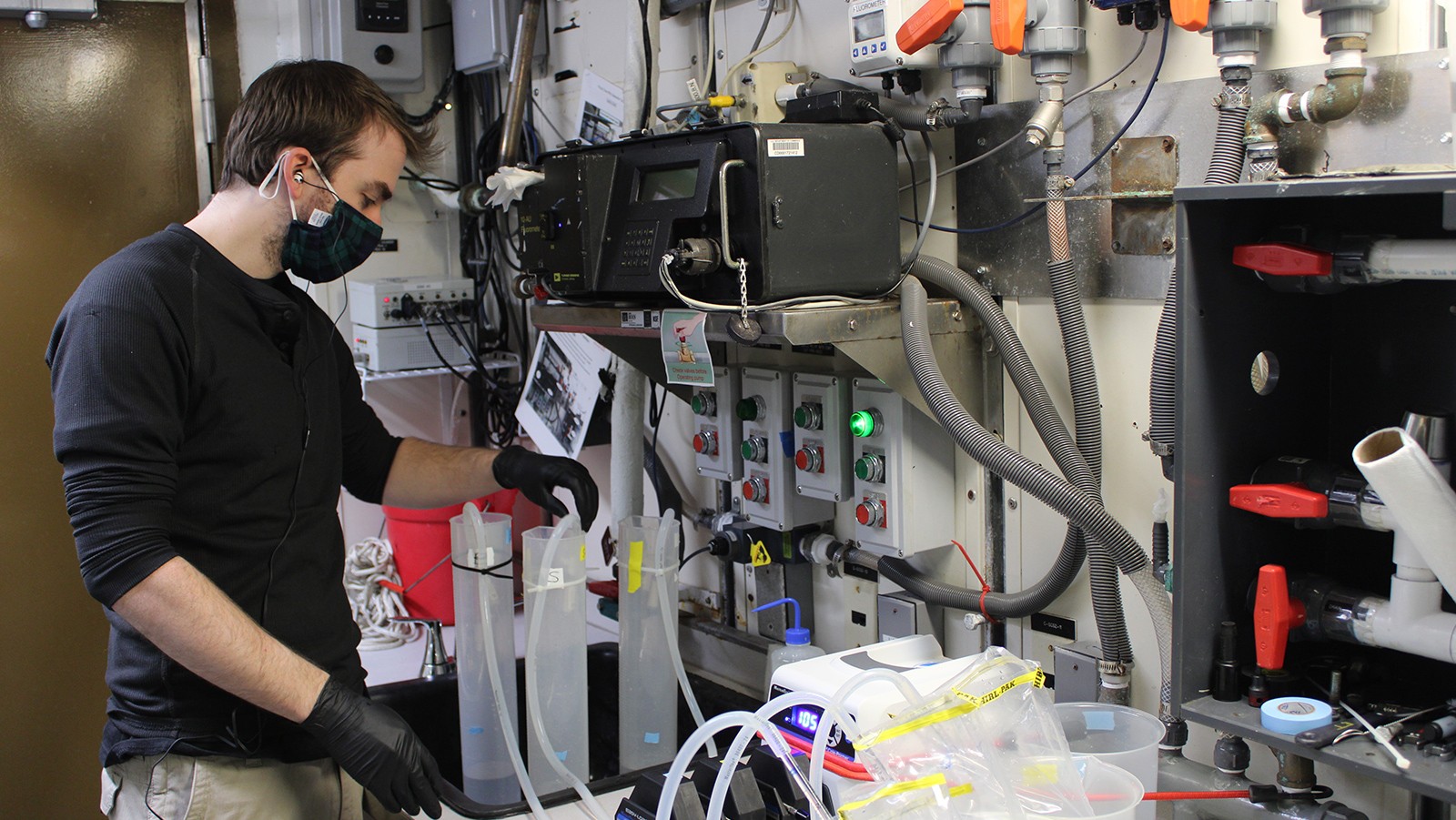Originally published by the Northern Gulf Institute March 15th, 2021.
From March to May, NGI Postdoctoral Associate Sean Anderson is taking part in two legs of a NOAA Fisheries survey in the Gulf of America on board NOAA Ship Pisces. The NOAA project, “Environmental DNA Enhancement of Fisheries Independent Monitoring Cruises for Ecosystem Based Fisheries Management”, seeks to improve ecosystem-based fisheries management (EBFM) with the use of environmental DNA (eDNA) sequencing. Camera traps (pictured) placed at the seafloor in the Gulf of America capture video of passing fish, while bottles collect seawater that the fish have passed through, leaving behind DNA traces.

The seawater is filtered back on the ship (pictured), and subsequently the filtered DNA is extracted, sequenced, and analyzed. This work will increase our understanding of how eDNA detection of fishery species correlates with direct measurements of these species by camera traps. Ultimately, this work will improve understanding of fish distributions in the Gulf of America and extend our understanding through modeling of these distributions. The SEAMAP reef fish video (SRFV) survey is being conducted by NMFS Mississippi Laboratories and by the sanctuaries Marine Biodiveristy Observing Network (MBON) led by the University of South Florida. The project is led by Christopher Kelble (NOAA/AOML), Matthew Campbell (NOAA/NMFS/SEFSC), Ryan Caillouet (NOAA/NMFS/SEFSC), and Alexis Janosik (University of West Florida). Analysis of samples at the NOAA Atlantic Oceanographic and Meteorological Laboratory is being led by NGI Associate Research Professor Luke Thompson.

